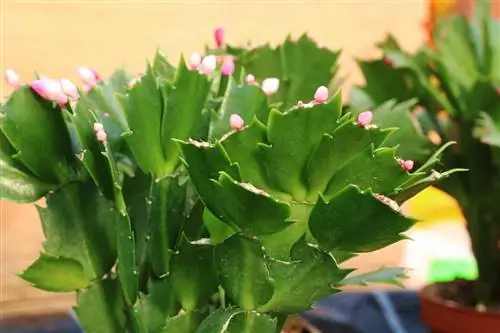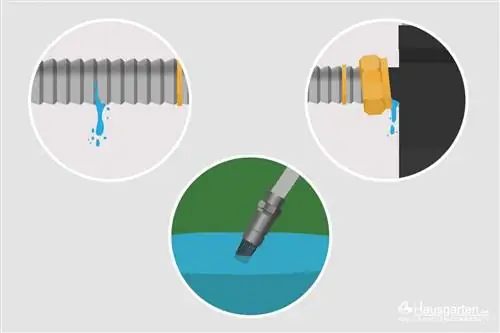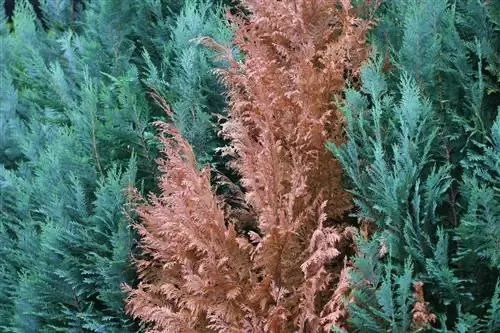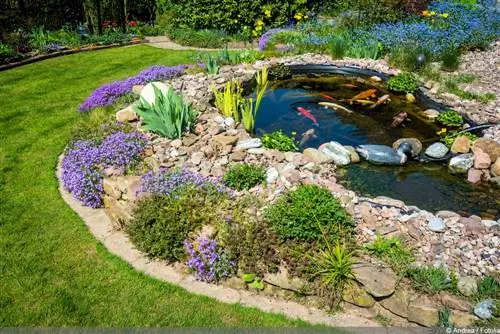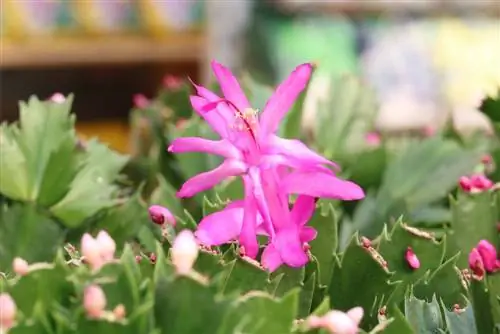- Author admin [email protected].
- Public 2023-12-17 03:39.
- Last modified 2025-01-24 12:45.
If the Christmas cactus sheds its buds, this is usually a sign that the houseplant is not feeling well. Fortunately, the shedding of flowers can usually be remedied in just a few simple steps. You can read what they are here!
Incorrect irrigation
Most cacti prefer it to be as dry as possible. Not so with the Christmas cactus, as it likes it to be a little wetter than its relatives - especially during the flowering period. If it doesn't receive enough water, it may drop its buds. But be careful: too much water is not good for the houseplant, especially since waterlogging promotes root rot. When it comes to watering, a bit of sensitivity is required:
- Water about once a week
- Soil surface should dry between watering processes
- Avoid waterlogging!
Tip:
It is best to check the substrate for dryness with a finger test. If the soil feels dry, it's time to water the houseplant.
Incorrect fertilization
Christmas cacti are best fertilized during the growth phase from April to September. Because during this period they can use the additional nutrients directly. However, if they are fertilized for longer, they may drop their flowers. This is also the case, for example, if too many flower buds have already formed. In addition, fertilization from late summer has more of an impact on leaf growth than on bud formation.
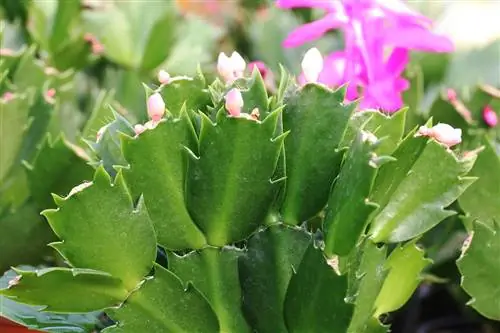
Lack of humidity
In the wild, the Christmas cactus grows in the tropical forests of Brazil and therefore prefers humid air. This is not always the case in living rooms at home, because the indoor air is usually too dry, especially in winter. The lack of humidity causes the succulent to lose its buds and the formation of the flowers suffers. However, the humidity can be optimized in just a few simple steps:
- Place a saucer with pebbles and water under the plant
- Evaporation increases humidity
- Spray the plant with water 1-2 times a week
Info:
Dry indoor air is promoted by air conditioning, heating and drafty areas, among other things.
Unfavorable temperatures
Christmas cacti prefer temperatures around 20 degrees Celsius during the growth phase. If it is too warm, there is a risk of overheating and dehydration. If, on the other hand, it is too cold, the plant sheds parts of the plant that are not vital to its survival in order to protect itself. While the flowers are forming, succulents generally like it to be a little cooler. However, if it continues to be too warm, this will affect flower formation and the plants may drop their flowers. For this reason, it is worth trying to emulate the seasonal temperature of your original home as follows:
- Lower temperatures during flower formation
- The optimal temperature is 15 degrees Celsius
- Below 10 degrees Celsius is too cold
Too much light during flowering
Christmas cacti are short-day plants and require more darkness than light during bud formation. Therefore, the location should be dark for a long time during the flowering period, so that the lighting conditions of tropical rainforests are simulated. In order to promote and prevent the formation of buds or flowers, the following should be taken into account from September onwards:
- At least 14 hours of darkness daily
- For at least 6 weeks
- Ideally from September to November
- Bright location the rest of the year
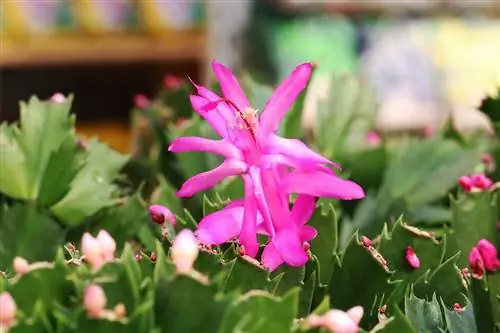
Although the houseplant prefers darkness while the flowers are forming, it should still receive enough light during the day. Because sunlight is needed for bud formation. If there is too little light, the plant will drop flower buds. For this reason, the location should be bright for at least 10 hours during the day, but avoid direct sunlight.
Fixed location
The Christmas cactus quickly gets used to its location and the associated conditions. He doesn't like change, which is why it's best not to change location. The plant generally doesn't like being turned or moved.

